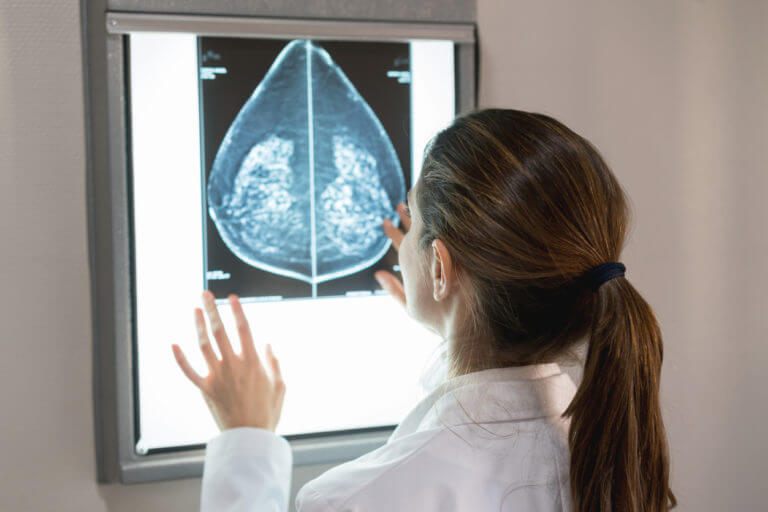
When cells in and around the breast are growing abnormally and out of control, breast cancer occurs. The cancer can be benign (not life-threatening) or malignant (life-threatening), and the goal is to catch the cancer before it can spread to other parts of the body through the circulatory and lymphatic systems.
Approximately 1 in 8 women develops breast cancer at some point in her lifetime. This accounts for about 12 percent of the female population.
A woman is at a higher risk of getting breast cancer if she has a first-degree relative (parent, sibling, or child) who has the same disease. While there has been a decrease in death rates from breast cancer since 1989, breast cancer remains the second leading cause of cancer death among women – second only to lung cancer.
And that is why it is imperative to get screened for breast cancer as a woman gets older, or if she has a first-degree relative who has had it. Let’s talk about what’s involved in the screening process and what you should know about breast health.
What Happens During Breast Cancer Screening
It’s important to take control of your health and get regular checkups by a gynecologist. The doctor will give you a manual breast exam and will perform a Pap smear to check for cervical cancer.
Your doctor will also prescribe a screening mammogram. During a mammogram, you will stand up next to the mammography machine, and the technician will place your breast into the X-ray mammography device.
The machine will then take several X-rays of your breast. The technician will then have your other breast screened with the machine.
A screening mammogram uses less radiation than a diagnostic mammogram, because the latter must capture more detailed images. You will only be asked to have a diagnostic mammogram performed if the screening mammogram captures questionable images that your doctor wants to examine further. We also offer MRI, sonography, and tomosynthesis for further breast cancer screening if necessary.
Breast Cancer Risks
The breast is made up of several parts: lobules, ducts, fat, and muscle. The lobules (mammary glands) produce milk, and the ducts (tubes) carry milk to the nipple. Breast cancer is most often found in the ducts or lobules.
There are several risk factors associated with this condition. Genetic risk factors include:
● Gender (mostly women)
● Age (66 percent of women are diagnosed after age 55)
● Family history of breast cancer
● Personal health history of breast cancer
● Menstrual and reproductive history
● Having dense breast tissue
Environmental risk factors include:
● Obesity and poor diet
● Lack of physical activity
● Alcohol consumption
● Smoking
● Radiation exposure
● Combined hormone replacement therapy (prescribed after menopause)
OB/GYN Clinic in Syracuse
University OB/GYN Associates is here to provide women access to breast cancer screening and diagnostic services. If you want to take precautionary actions, or if you have a relative who has or has had breast cancer, let us help you.
Call us at (315) 464-5162 today to learn more about our program or to schedule a screening. You can also fill out our appointment request form online now. We’re conveniently located on Harrison Street in Syracuse, and we look forward to seeing you here.



